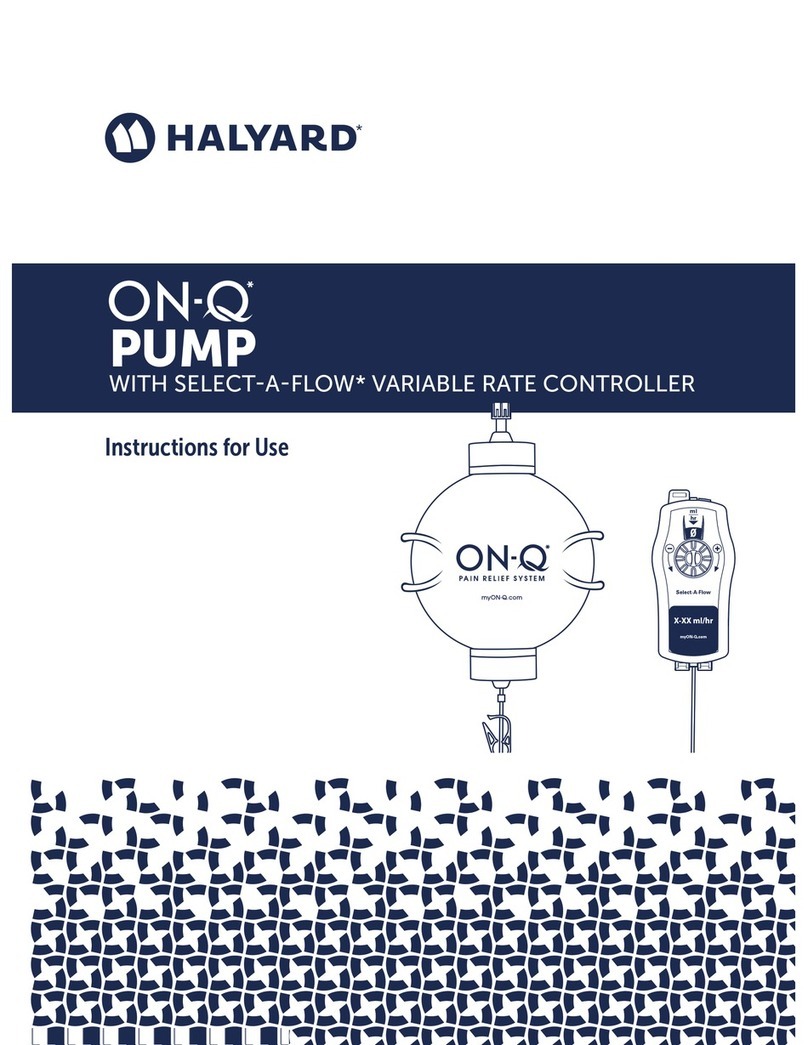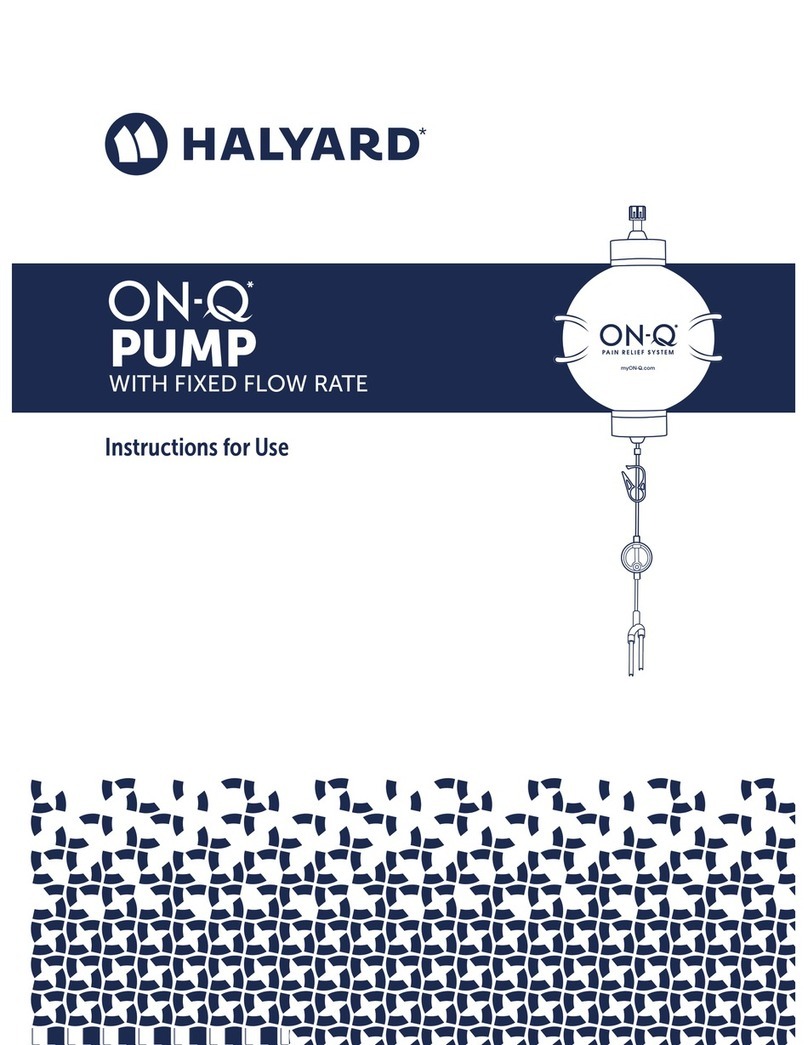2
If the bolus button does not pop back up within
30 minutes of pressing it, check position of orange
indicator:
• If orange indicator is in the bottom position, close
the clamp. Continuous medication delivery may
be occurring significantly greater than theTotal
Flow Rate.
• If orange indicator is in the top position:
something may be impeding the flow. Check
for tubing kinks, closed clamp or patency of
connected devices such as catheter or unvented
filter (verify patency) according to your standard
protocol.
• It is the responsibility of the healthcare provider to
ensure patient is educated on the proper use of the
system.
• It is the responsibility of the healthcare provider to
modify Patient Guidelines provided with the pump
as appropriate for your patients’clinical status and
medication prescribed.
Cautions
• Do not use if package is open, damaged or a
protector cap is missing.
• Single use only. Do not resterilize, rell or reuse.
Reuse of the device could result in the following risks:
• Improper functioning of the device (i.e., inaccurate ow
rate)
• Increased risk of infection
• Occlusion of the device (i.e., impedes or stops infusion)
• The pump is sterile and non-pyrogenic.
• Product uses Di (2-ethylhexyl) phthalate (DEHP)
plasticized PVC:
• DEHP is a commonly used plasticizer in medical devices.
There is no conclusive scientic evidence to date that
exposure to DEHP has a harmful eect on humans.
However, the risk and benet of using medical devices
with DEHP for pregnant women, breastfeeding mothers,
infants and children should be evaluated prior to use.
• Certain solutions may be incompatible with the
PVC material used in the administration set. Consult
drug package insert and other available sources of
information for a more thorough understanding of
possible incompatibility problems.
• Do not underll pump. Underlling pump may signicantly
increase the ow rate.
• Do not exceed maximum ll volume. (Table 1)
• Clamp is provided to stop the infusion. Do not remove or
break clamp. Do not use clamp as an intermittent
delivery device.
• Roll tubing between ngers to promote ow if clamped for
extended time.
• The ll volume, infusion rate, bolus dose and bolus interval
is labeled on the ll port.
• Avoid contact of cleansing agents (like soap and alcohol)
with the lter because leakage may occur from the air
eliminating vent.
• Do not tape over lter(s) as this could block the air vent and
impede the infusion.
• Do not immerse pump in water.Take care to protect the
pump during any activities, which could cause pump and
lter to get wet, such as showering.
• In the event of any leakage from pump or administration
set, close tubing clamp. Replace pump if necessary.
• Do not discard the pump and contact Halyard Health for
product return instructions.
• Do not add unvented lter to end of the administration set
as this may impede or stop the ow rate.
• Do not remove the red tab until the tubing is completely
primed. Up to 5 ml bolus of air may be delivered if not
primed correctly.
• Flow rates may vary due to:
Fill volume
• Filling pump less than the labeled volume results in
faster ow rate.
• Filling pump greater than the labeled results in slower
ow rate.
• Viscosity and/or drug concentration
• Pump position - position pump at approximately the
same level as the catheter site:
• Positioning pump above this level increases ow rate.
• Positioning pump below this level decreases ow rate.
Temperature
• The ONDEMAND* device should be worn outside
clothing and kept at room temperature.
• To ensure ow rate accuracy, do not place heat or cold
therapy in close proximity to the ow controller.
• Temperature will aect solution viscosity, resulting in
faster or slower ow rate.
• ONDEMAND* device have been calibrated using Normal
Saline (NS) as the diluent and room temperature (22°C,
72°F) as the operating environment. Flow rate will
increase approximately 1.4% per 1°F/0.6°C increase in






























